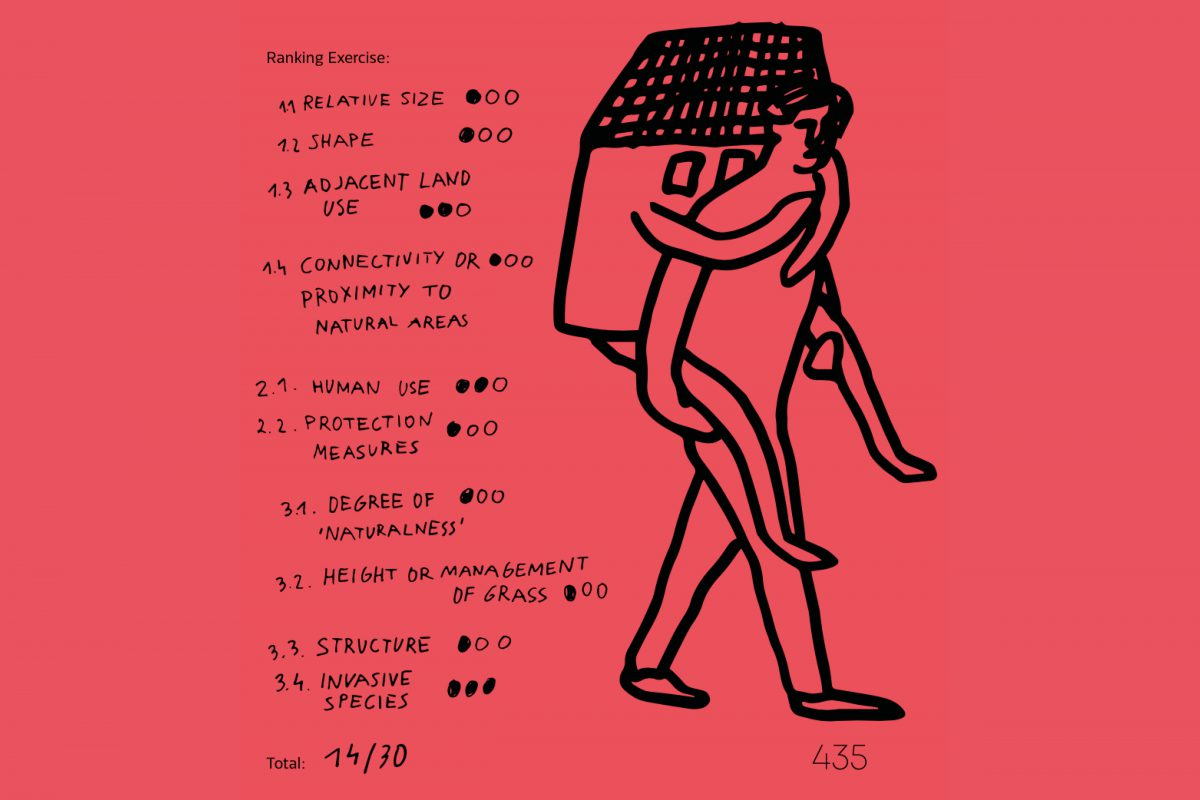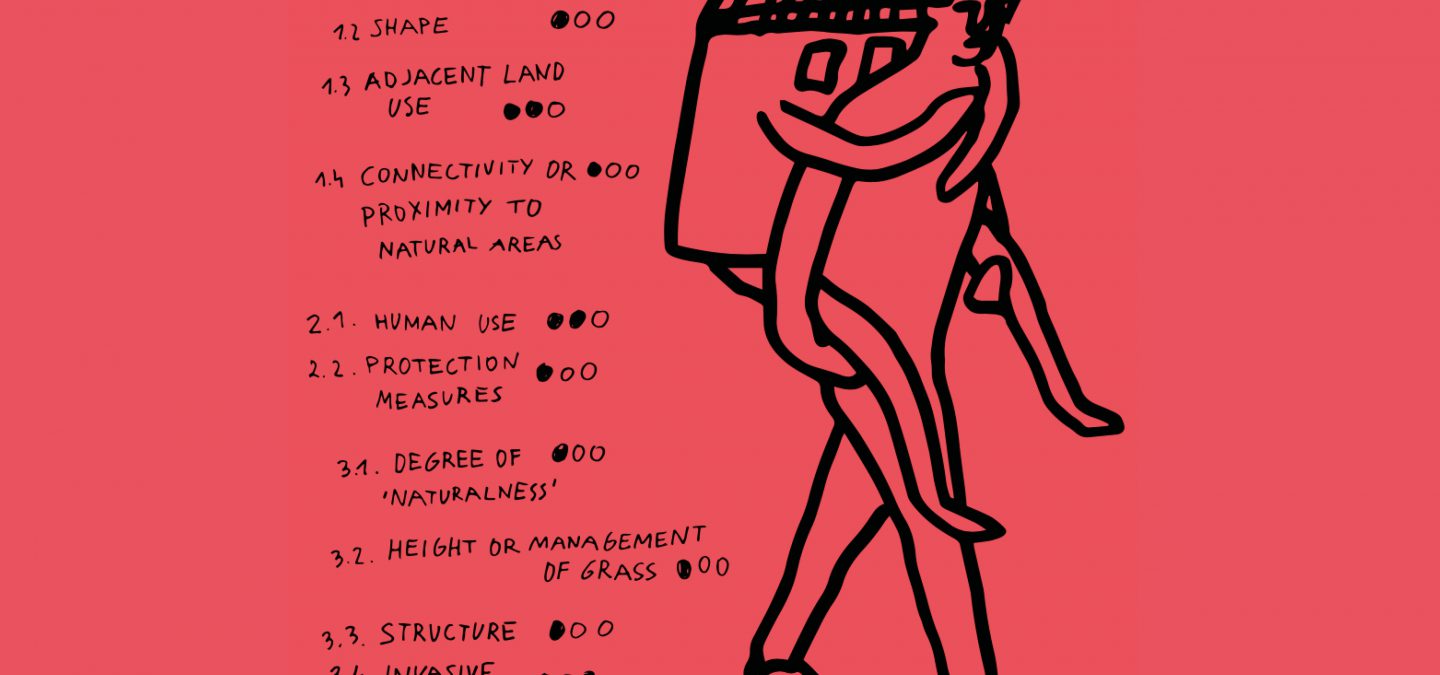
Keep up with our latest news and projects!

Building off concepts and strategies presented earlier in Inclusive Ecology, this section provides a brief overview of a ranking index that I developed as a master’s student. The methodology can help urban planners, or any interested stakeholder, evaluate the ecological strength of green spaces in their cities and towns.
The tool was designed to allow individuals without formal education or training in landscape ecology to begin to characterize green space and evaluate how its spatial configuration (size and shape), distribution (quantity, distance, location), human use, and vegetation management, contribute or detract from overall ecological health.
The methodology is far from perfect, but results from the evaluation exercise may allow for some broad, qualitative conclusions about the ecological strength of the analyzed green space. With that information in hand, one can initiate conversations and begin to establish strategies for management and growth of the green space network. The categories, indicators, and the point system for the ranking tool are presented in the table below.
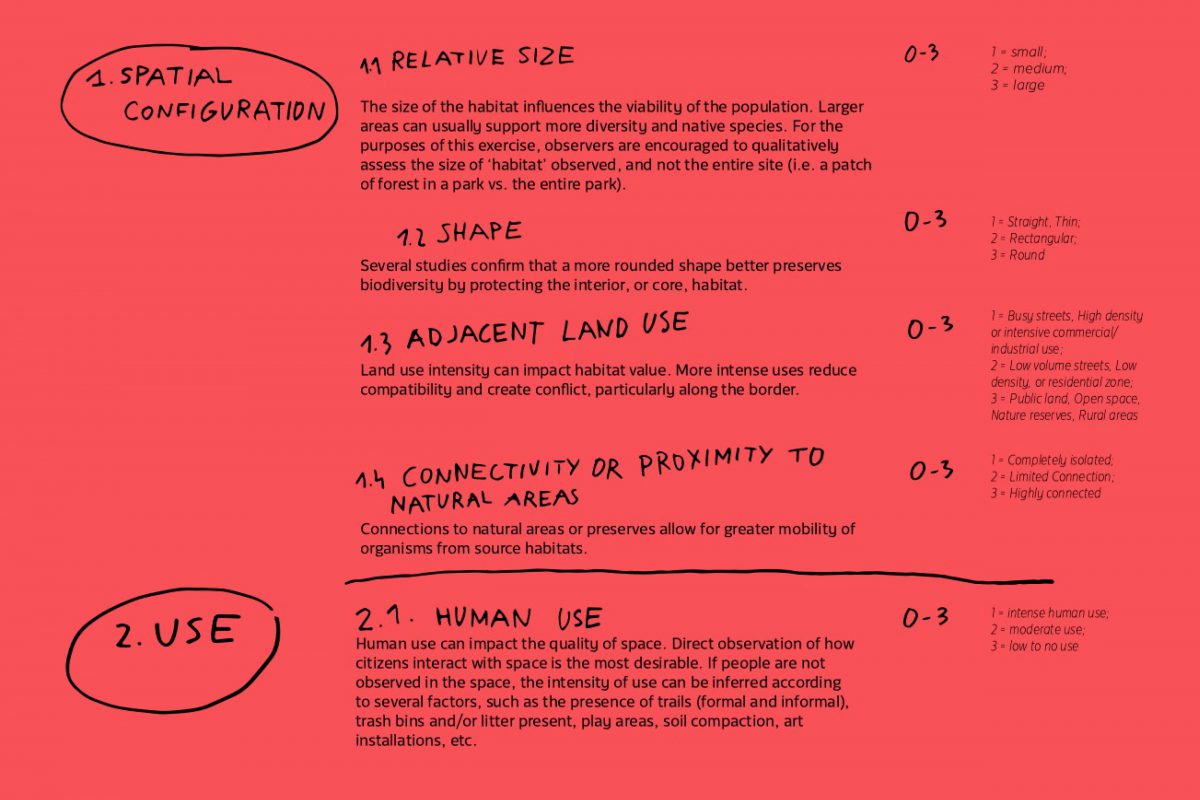
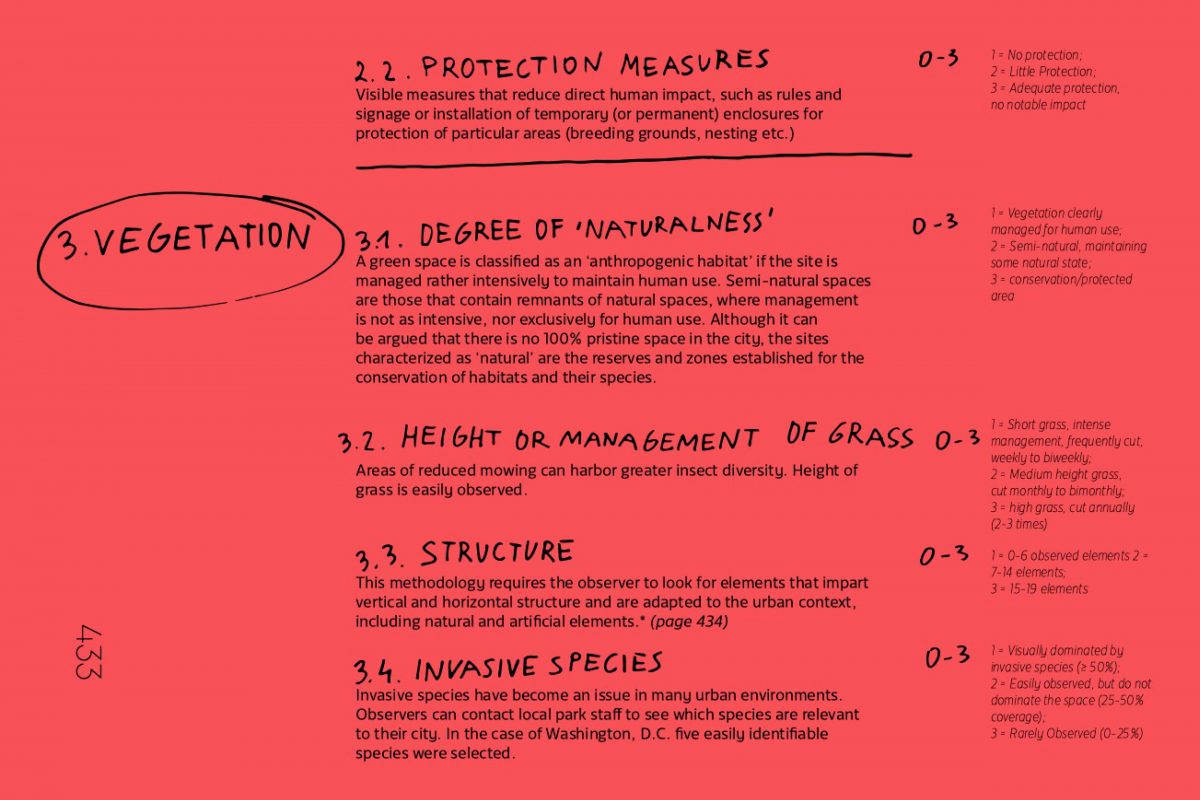
*The observer should look for and count the following elements: forest, group(s) of trees, row(s) of trees, single trees, hedges and shrubbery, dead wood, tall herbs/grasses, manicured lawn, annual vegetation (short-lived), trodden or intensely used vegetation, exposed or bare soil, plants growing on vertical surfaces such as walls or fences, walls and broken stone/rubble, artificial structures, paved areas/paths, aquatic plants, presence of water, mosaic of different park areas, varied topography.
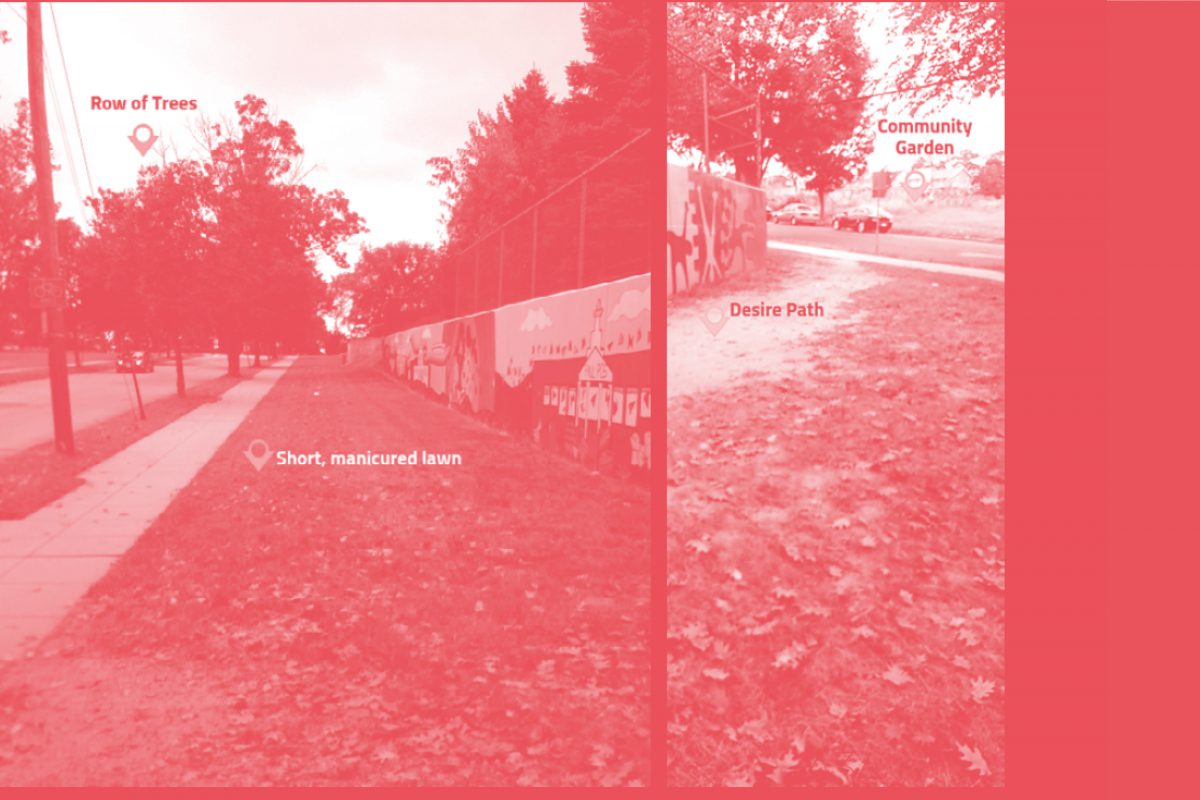
The following example presents the ranking index in practice. The observed space in Washington D.C. is on public land in front of a school. The corner of the site has a ‘desire path’ which has been compacted by heavy foot traffic. Desire paths typically represent the shortest and/or most easily navigated route in a green space. Aside from the corner, the size, configuration, and location of the site do not permit many recreational activities. No other human activity was observed in this particular space. There is very little vegetation beyond manicured lawn. Due to close proximity to a community garden (adjacent land use across the street), its linear structure, and exposure to sunlight, this might be a suitable area for pollinator-friendly vegetation.
